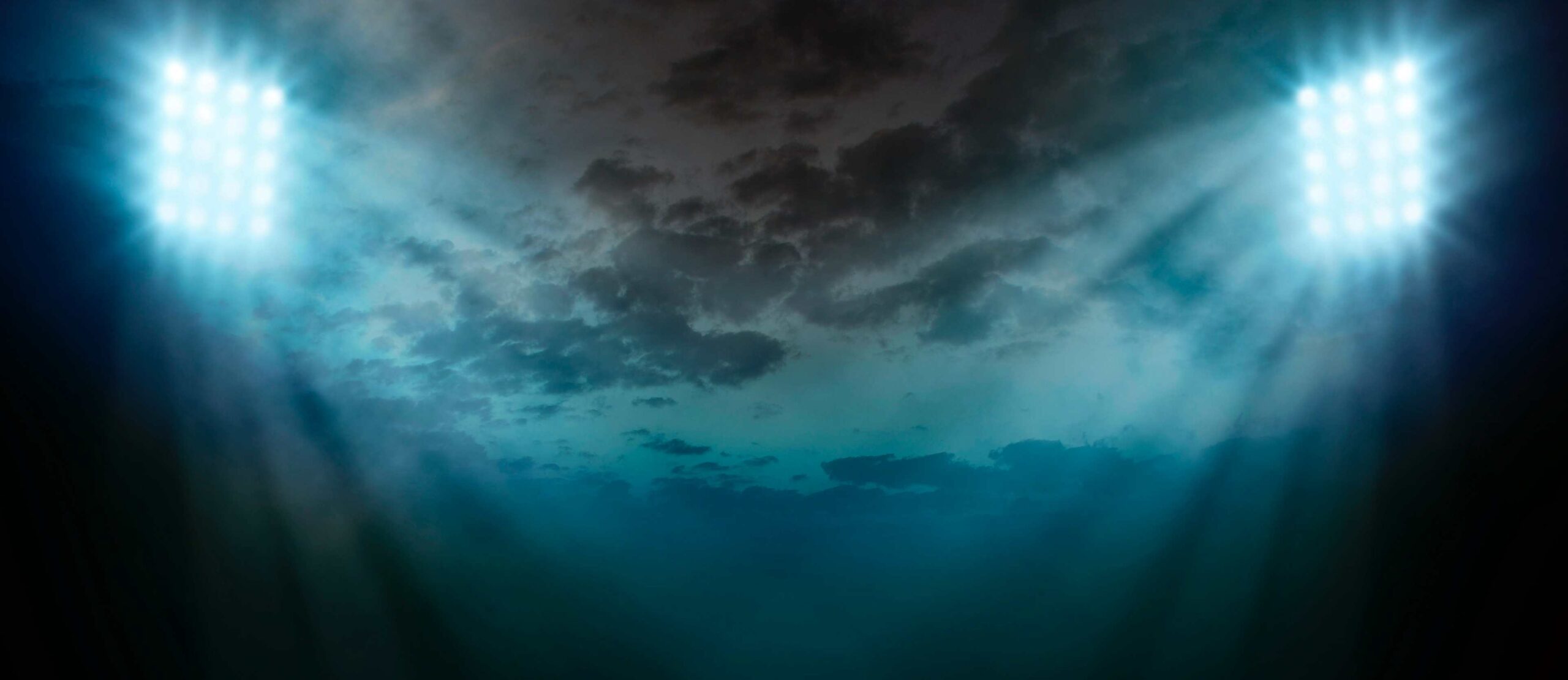LED floodlights – the outdoor challenge for sports stadiums
LED floodlights are number one choice in residential floodlighting – but why not in sports grounds?
Floodlights are a tried and tested way to keep residential and commercial properties illuminated. They provide safe passage for families and workers and deter would-be intruders from trying their luck on a dark night. And you can count on new technology to keep installers on their toes.
LED floodlights or bust
When LEDs first went mass market in the noughties, they were mostly used in globes and strip lights. Now they are way more efficient and have moved into bigger and brighter territory.
“LEDs have had a huge impact in the floodlight market,” says Mitchell Whittaker, Category Manager at Haneco Lighting.
“Their long lifetime leads to low maintenance and the significant improvement in efficiency provides cost savings in reduced energy consumption.”
So ubiquitous are they, in fact, that non-LED floodlights have all but disappeared from our backyards. “They’re not really a thing anymore due to the difficulty getting replacement lamps,” says Mitchell. “And with all the added benefits, it becomes an obvious decision to switch to LED.”
Floodlights have got to look good!
Beyond the obvious appeal of LED, most home and business owners also want their floodlighting to look good. Because manufacturers are now able to use fewer LEDs to create the same effect, fixtures are becoming increasingly more compact, and the latest polymer materials improve the appearance of the casing.
“The aesthetics have become sleeker and more compact,” says Mitchell. “Overall, they are visually more appealing than the traditional boxy nature of a HID floodlight. It will be interesting to look at the rise of new materials or composites outside of die-cast aluminium. Also, the use of 3D printers may impact where future manufacturing goes.”
Keeping floodlights on the right side of light pollution
There’s no denying that floodlights get a bad rap for light pollution and light trespass. While it might seem difficult to avoid this when your very purpose in life is to light up the night sky, advances in motion sensors, directional lights and energy efficiency are all helping to counteract the negative press.
“Changes to lighting standards such as AS/NZS 4282 Control of Obtrusive Effects for Outdoor Lighting, and generally more awareness of light wastage within the general public pushes for better light control for the environment,” says Mitchell.
While residential floodlights are switching to LEDs for obvious reasons, sports stadiums are slower to the game. But why?
Mitchell says, “I think it comes down to two things. First is the investment cost to upgrade to LEDs.”
“A complete retrofit installation can run into the millions, depending on the size and features of the stadium. A lot of these stadiums don’t have that kind of budget available, especially those that already underwent lighting upgrades in the past decade to handle the requirements of broadcasting HDTV."
“Second, LED technology, until quite recently, has not been advanced enough for high wattage usage. LEDs generate a lot of heat, and it’s vital for their reliability and longevity to stay as cool as possible. To manage this, a very large heatsink would be needed to control temperatures, resulting in a luminaire that’s far too heavy to be retrofitted into a stadium without extensive structural improvements to the grandstand. But the advancements of increased light efficacy and thermal efficiency now allow for close to a 1:1 ratio of weight and size, compared to traditional HID floodlights.”
“Over the next few years, the demand to upgrade stadiums will increase. With LED, a smart or ‘connected’ floodlight can do so many things. One example is their ability to turn on/off a light show instantly — this is something driving the desire to upgrade, especially as stadiums are used as multi-purpose venues.”





Comments (0)
Write a Comment